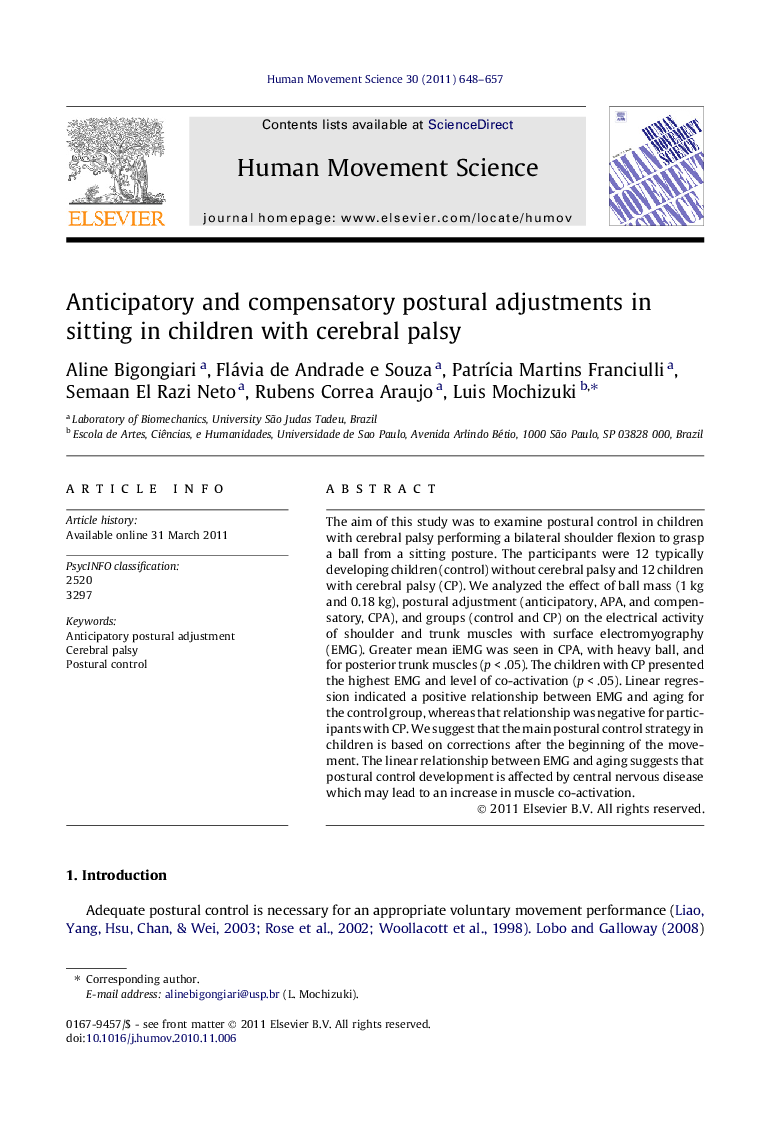| Article ID | Journal | Published Year | Pages | File Type |
|---|---|---|---|---|
| 928599 | Human Movement Science | 2011 | 10 Pages |
The aim of this study was to examine postural control in children with cerebral palsy performing a bilateral shoulder flexion to grasp a ball from a sitting posture. The participants were 12 typically developing children (control) without cerebral palsy and 12 children with cerebral palsy (CP). We analyzed the effect of ball mass (1 kg and 0.18 kg), postural adjustment (anticipatory, APA, and compensatory, CPA), and groups (control and CP) on the electrical activity of shoulder and trunk muscles with surface electromyography (EMG). Greater mean iEMG was seen in CPA, with heavy ball, and for posterior trunk muscles (p < .05). The children with CP presented the highest EMG and level of co-activation (p < .05). Linear regression indicated a positive relationship between EMG and aging for the control group, whereas that relationship was negative for participants with CP. We suggest that the main postural control strategy in children is based on corrections after the beginning of the movement. The linear relationship between EMG and aging suggests that postural control development is affected by central nervous disease which may lead to an increase in muscle co-activation.
